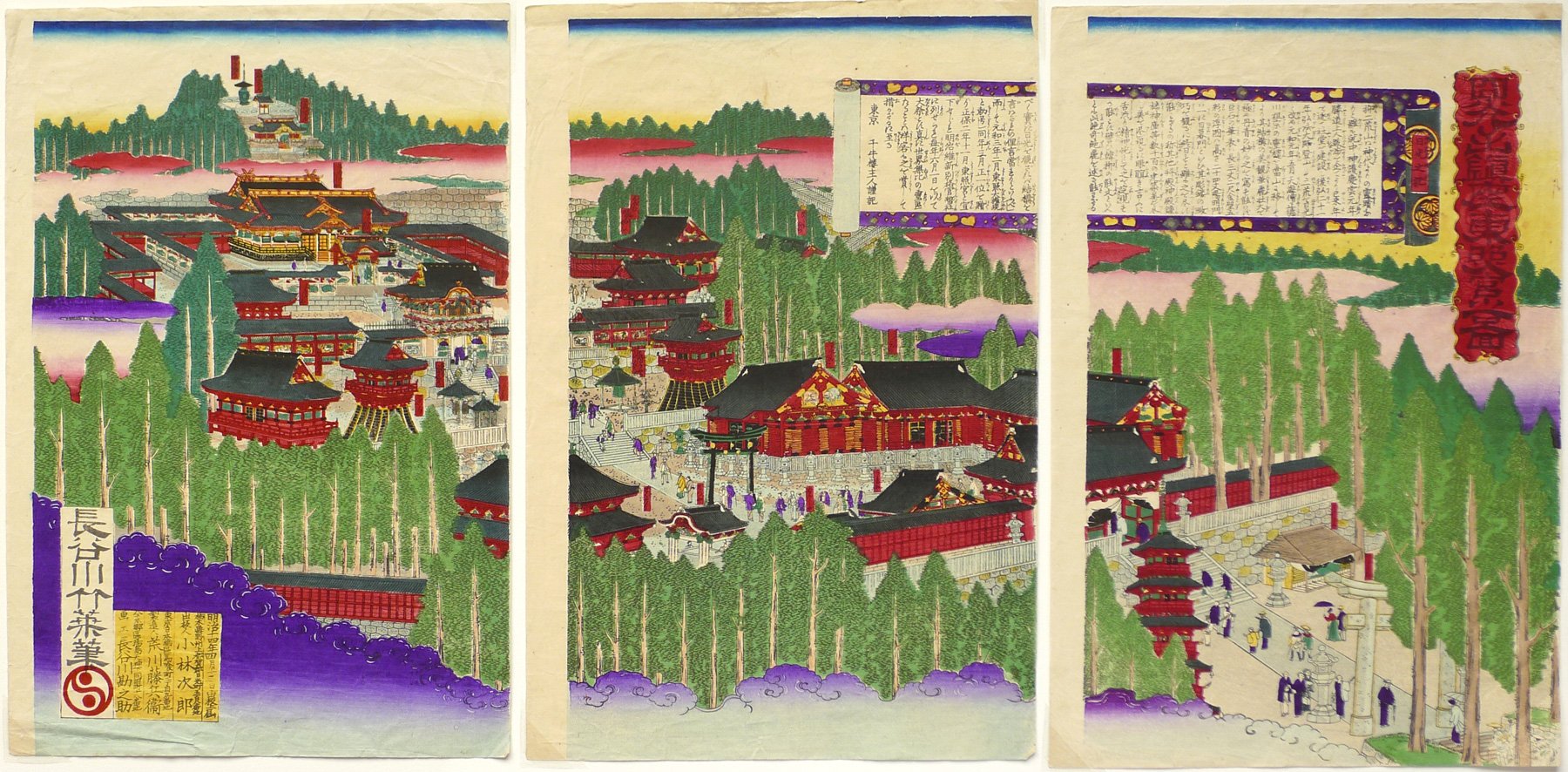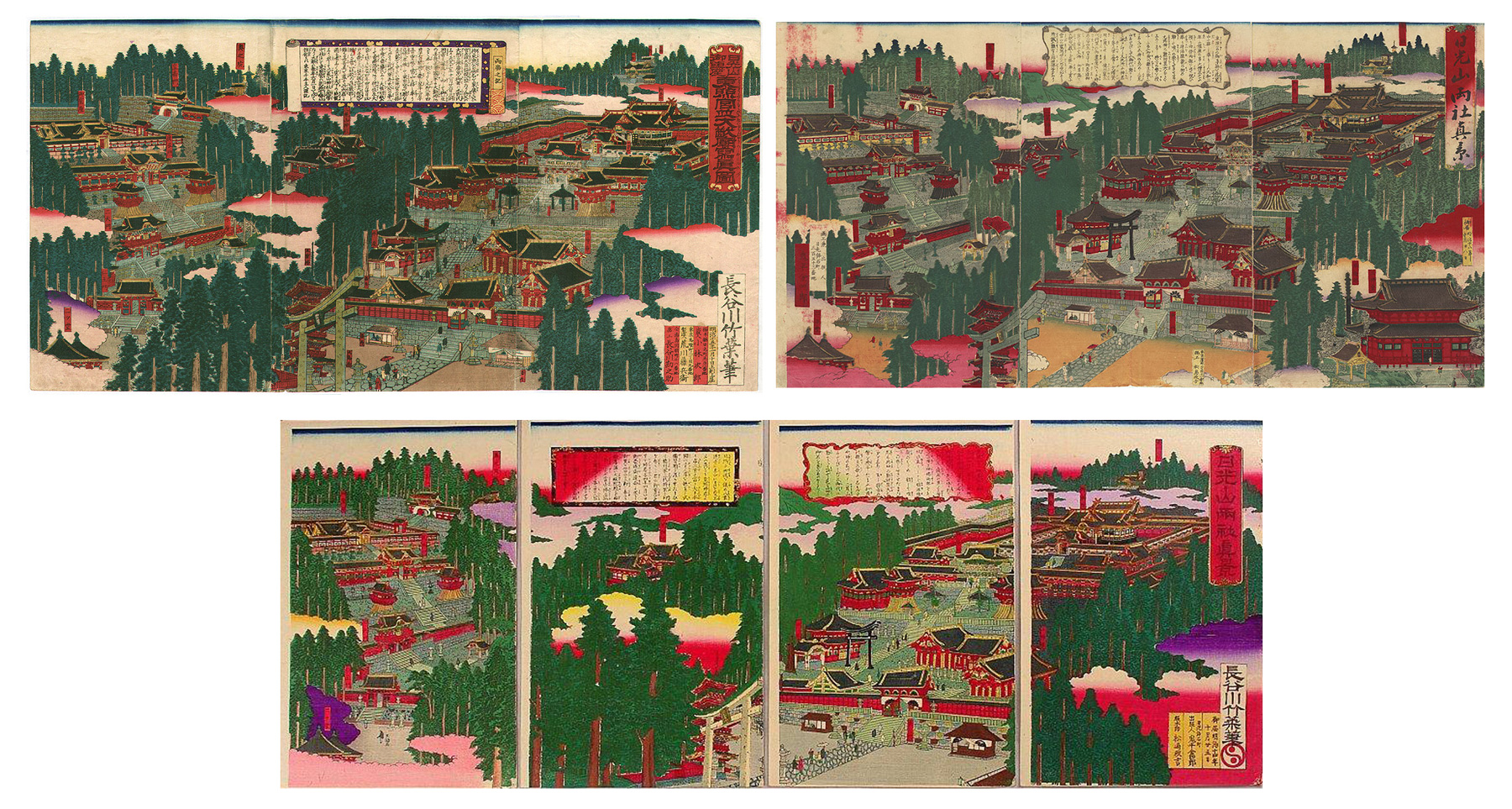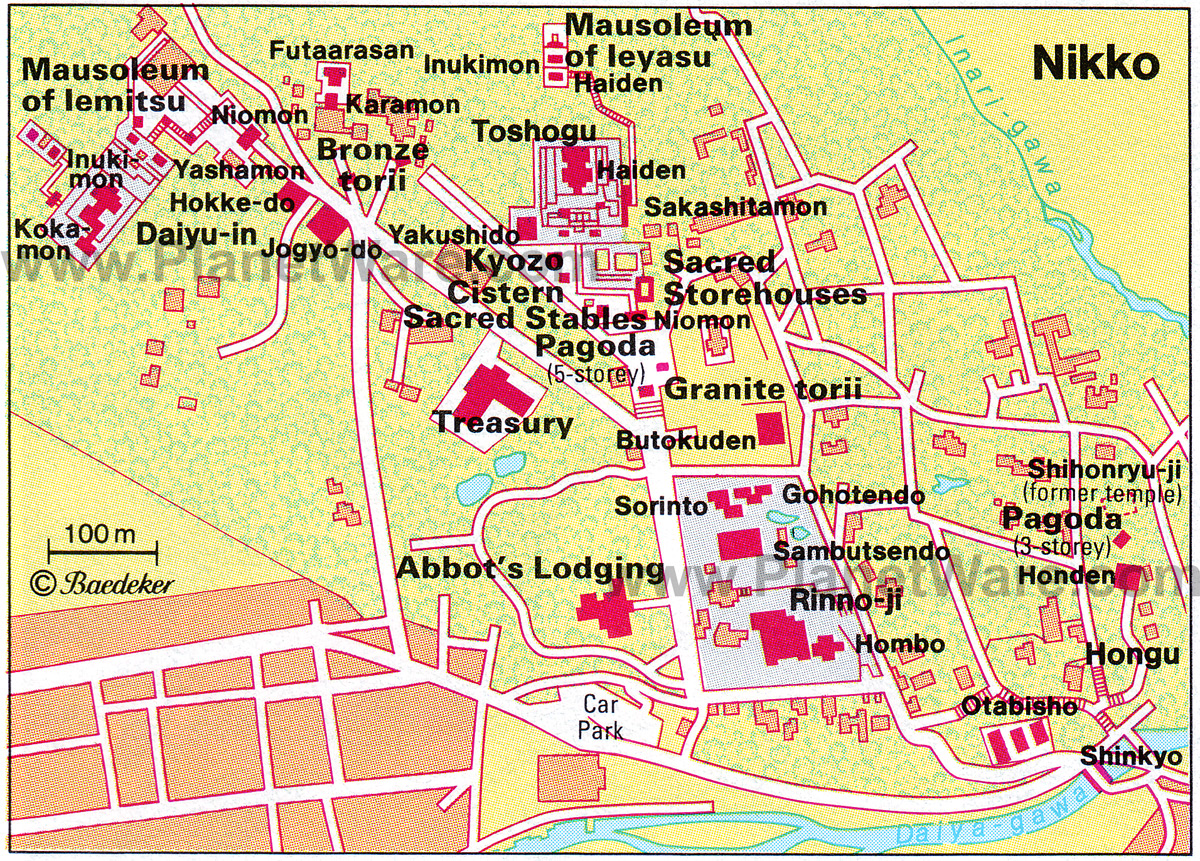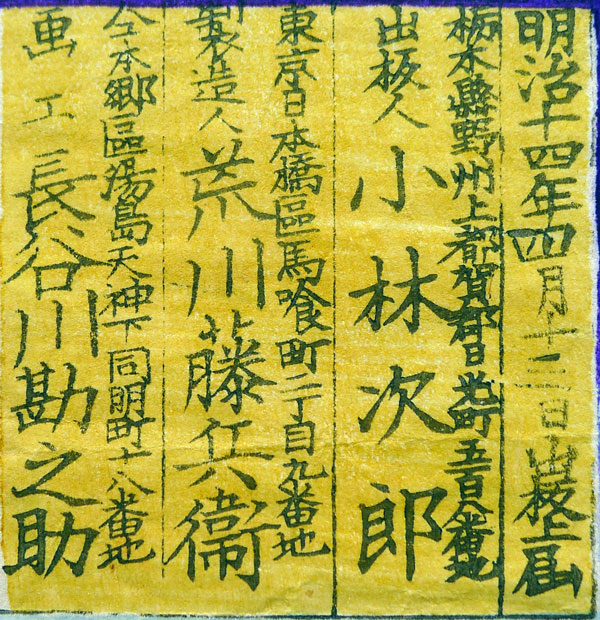About This Print
One of at least four panoramic views of Nikko's Toshogu Shrine created in 1881 and 1882 by the artist Hasegawa Chikuyō (fl. c. 1870-1880s) and published by Arakawa Tōbei in conjunction with Kobayashi Jirō. This collection's print reorients the view as compared with the below three prints.The scroll recounts how and when the shrine was built.
Toshogu Shrine Nikko
Source: Sacred Destinations websiteThe Toshogu Shrine is the main attraction of Nikko. The Shinto shrine is dedicated to the kami (spirit) of Ieyasu (d. 1616), who founded the Tokugawa Shogunate, a military dynasty that ruled Japan from 1603 to 1867.
To create a worthy shrine for the shogun, 15,000 craftsman worked for two years, using 2.5 million sheets of gold leaf. The enshrinement of Ieyasu's spirit is reenacted twice each year in the Procession of the Thousand Warriors.
Unlike most Shinto shrines, characterized by minimalist architecture that blends into its surroundings, Toshogu is a riot of color, gold, and carvings, with birds and flowers, dancing maidens, and sages following one another around the buildings. Some visitors find the shrine awe-inspiring and beautiful; others are repelled by the gaudiness. In contrast to the exuberance of the shrine, Ieyasu's mausoleum itself is relatively simple and austere.
One of the most famous elements of Toshogu is the Sacred Stable, where a white imperial horse is kept (a gift of New Zealand). The stable's fame derives from the original carving depicting the three wise monkeys, "Hear no evil, Speak no evil, See no evil." Other famous carvings at Toshogu include a sleeping cat and an odd rendering of an elephant by an artist who had apparently never seen one.
Although a Shinto shrine, Toshogu contains several Buddhist elements. Next to the entrance gate is a five-story pagoda in red and gold, and beyond it is the formal entryway flanked with the Two Deva Kings. A Buddhist library with over 7,000 scrolls of sacred texts is contained in a revolving case, which can be turned in order to effect the equivalent of praying all the texts.
Print Details
| IHL Catalog | #432 |
| Title or Description | Panoramic Map of Toshogu Shrine in Nikko - Chronicle of Nikkō 日光山鎮座東照宮之図 日光之記 [囧光山鎮座東照宮之図 日光之記] |
| Artist | Hasegawa Chikuyō (fl. c. 1870-1890s) |
| Signature |  |
| Seal (artist) | yin-yang symbol (as shown above) |
| Publication Date | 明治14年(1881) 4月13日 (as shown below) |
| Publisher | Two publishers are shown in the center columns of the yellow cartouche: 荒川藤兵衛 Arakawa Tōbei [Marks: seal not pictured; publisher ref. 591; Trade Name Yamaguchiya Tobei; sealed as Arakawa Tōbei from 1876] -and- 小林次郎 Kobayashi Jirō [Marks: seal 26-117; publisher ref. 255] The column on the far left gives the artist's given name of 長谷川勘之助 Hasegawa Kannosuke followed on the right by his address. The column on the far right gives the date the print was issued 明治14年(1881)4月13日 |
| Carver | |
| Printer | |
| Impression | excellent |
| Colors | excellent |
| Condition | good - full size separate panels; unbacked; minor wrinkling throughout |
| Genre | ukiyo-e; keidai-ga |
| Miscellaneous | |
| Format | vertical oban triptych |
| H x W Paper | 14 x 9 3/8 in. (35.6 x 23.8 cm) each sheet |
| H x W Image | |
| Collections This Print | Shizuoka Prefectural Central Library K915-108-036-041 [note: the Shizuoka print carries an issued date of Meiji 14, 1st month, 10th day rather than Meiji 14, 4th month, 13th day which appears on this collection's print]; Japan Arts Council 09176 [note: the JAC print carries the same date of issue as this collection's print] |
| Reference Literature |






